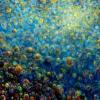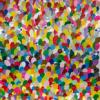A recent (just today on Scholar) thesis corroborates of CD38 inhibition by cyanidin 3-glucoside (kuromanin), and subsequently increased intracellular [NAD
+]. This is to my knowledge only the second paper to report C3G's effects on CD38. It also corroborates that CD38 is the overwhelming consumer of intracellular NAD
+, as PARP inhibitors and sirtuin inhibitors had no effect on [NAD
+].
Al-Abady, Zainab N. "
The role of CD38 expression on NAD levels and cell physiology in a leukaemia model." (2014).
I haven't had a chance to more than skim the figures. With the usual caveats about
in vitro studies on mutant cell lines:
Figure 3.17: 8 μM C3G increased [NAD
+] by about 70% in RAJI leukemia cells, but had a negligible effect on undifferentiated HL60 cells, which express little CD38.
Figure 3.18: The effect on [NAD
+] was roughly linear from 3 μM (~40% increase) to 30 μM (~70%) increase. Exposure time had more impact than concentration.
Figure 5.2: 30 μM C3G decreases CD38
expression, too.
So, this suggests the trick would be to get plasma C3G to around 2-3 μM and maintain it there all day long. The oral pharmacokinetics remain a big obstacle.
Edited by Darryl, 01 March 2014 - 01:21 AM.
























































